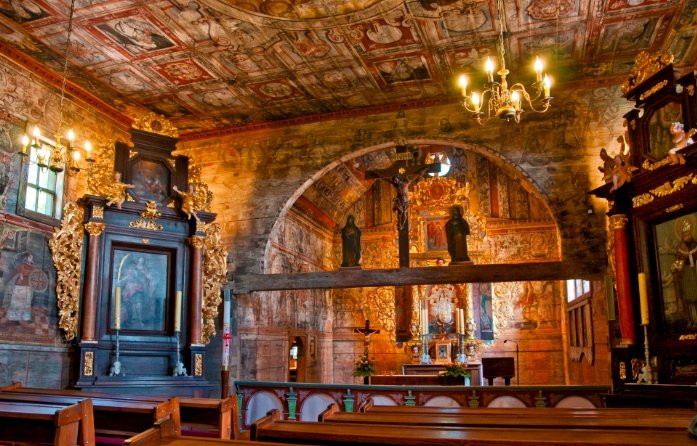For centuries, Poland’s Piast dynasty stood as a national cornerstone — homegrown rulers said to have emerged from the soil of Slavic ancestry. But a recent series of scientific breakthroughs has delivered a jolt to that story: Poland’s founding kings may not have been Polish at all. In fact, their bloodline might trace to the rugged shores of early medieval Scotland.
That’s the stunning implication of genetic research led by molecular biologist Marek Figlerowicz and his team at Poznań University of Technology. Their DNA study, which involved exhuming bones from over a dozen medieval crypts, has introduced a new and unexpected player into Polish history — the ancient Picts of northern Britain.
Digging Through History — Literally
Historians and archaeologists have long debated the true origins of the Piast dynasty, which ruled Poland from the 10th to the 14th centuries. Competing theories pointed to everything from Slavic warlords to exiles from Great Moravia to adventurous Norsemen.
But since 2023, a collaboration of scientists and historians has brought hard data to the debate. Field teams have opened burial sites believed to belong to the Piasts, the largest and most revealing of which was found beneath the stone floors of Płock Cathedral in central Poland.
The remains dated from 1100 to 1495 — matching historical records — and were identified as Piast royals by DNA similarities and kinship patterns.
“There is no doubt we are dealing with genuine Piasts,” said Figlerowicz at a conference in May 2025.
In total, DNA was successfully extracted from 33 individuals (30 men and 3 women), spanning nearly the entire timeline of the dynasty.

A Scottish Surprise in the Y Chromosome
The most jaw-dropping finding emerged from the Y chromosome — the strand of DNA passed directly from father to son.
Almost all the male Piasts shared a rare genetic signature. Today, that same variant is most commonly found not in Poland, but in Britain. The closest genetic match? A Pict buried in eastern Scotland, dated to the 5th or 6th century.
For historians, it was a moment of reckoning.
“This places the paternal line of the Piasts not in Greater Poland or even Central Europe, but in the North Atlantic region,” said one geneticist not involved with the study.
While the timeline of their migration remains murky, the implications are clear: Poland’s founding dynasty descended from foreign stock. Whether that migration happened centuries earlier or just a generation before Mieszko I — the first recorded Piast ruler — is still unknown.
The Myth of a Native Lineage — Upended
For centuries, the Piasts were romanticized as sons of the Slavic soil — a dynastic line rooted deeply in Polish land and lore. That myth has now been unsettled.
The narrative of an unbroken, local paternal lineage no longer holds up to scientific scrutiny. The founding father of Poland, it seems, may have spoken with a brogue — at least, genetically speaking.
Still, it’s not all cultural displacement. Broader genetic studies offer a stabilizing counterweight: the general population ruled by the Piasts was overwhelmingly local and Slavic.
One extensive study of Iron Age burial sites across Poland, published in Scientific Reports, showed that the genetic profile of people living 2,000 years ago matches the DNA of early medieval Polish communities. A separate project examining pre-Piast graves reached the same conclusion: ordinary Poles were part of a stable, continental gene pool stretching from Denmark to France.
In other words, even if the crown came from far-off shores, the people were rooted in the land.
The Peat Has Secrets Too
Meanwhile, another arm of the Poznań research project is looking not at bones, but mud. A separate team has been analyzing environmental samples from Lake Lednica — a place many Poles regard as the symbolic cradle of the Piast realm.
Lake Lednica’s peaty floor, with its preserved pollen and sediment, holds environmental clues about the rise of Piast society. So far, studies point to organized settlement, agriculture, and a growing population around the same time the dynasty gained traction — regardless of where the rulers themselves came from.
Rewriting the Story — Or Deepening It?
The reaction in Poland has been mixed.
For some, the idea that their first kings were genetic outsiders is jarring — even offensive. Polish identity has often leaned heavily on the symbolism of self-rule, cultural continuity, and ethnonational roots. Suggesting that their original monarchs were descended from northern Britons or Picts touches a raw nerve.
But others are taking a broader view.
“Poland has always been at the crossroads of Europe,” said one historian at Jagiellonian University. “Dynasties rise and fall. Borders move. People migrate. This doesn’t erase our history — it enriches it.”
Indeed, the Piasts remain foundational to Poland’s statehood, legal traditions, and cultural heritage. Whether their Y chromosomes came from Scotland, Scandinavia, or the steppes of Eurasia, their legacy is Polish — forged in the heart of Europe.
One-sentence paragraph here.
For modern Poles, the findings may not change how they celebrate Mieszko I Day or remember the Baptism of Poland in 966. But they may prompt a bit more nuance in school textbooks and national museums.
As for the bones? They’ve been respectfully returned to their resting places — with a new chapter added to their silent story.


















